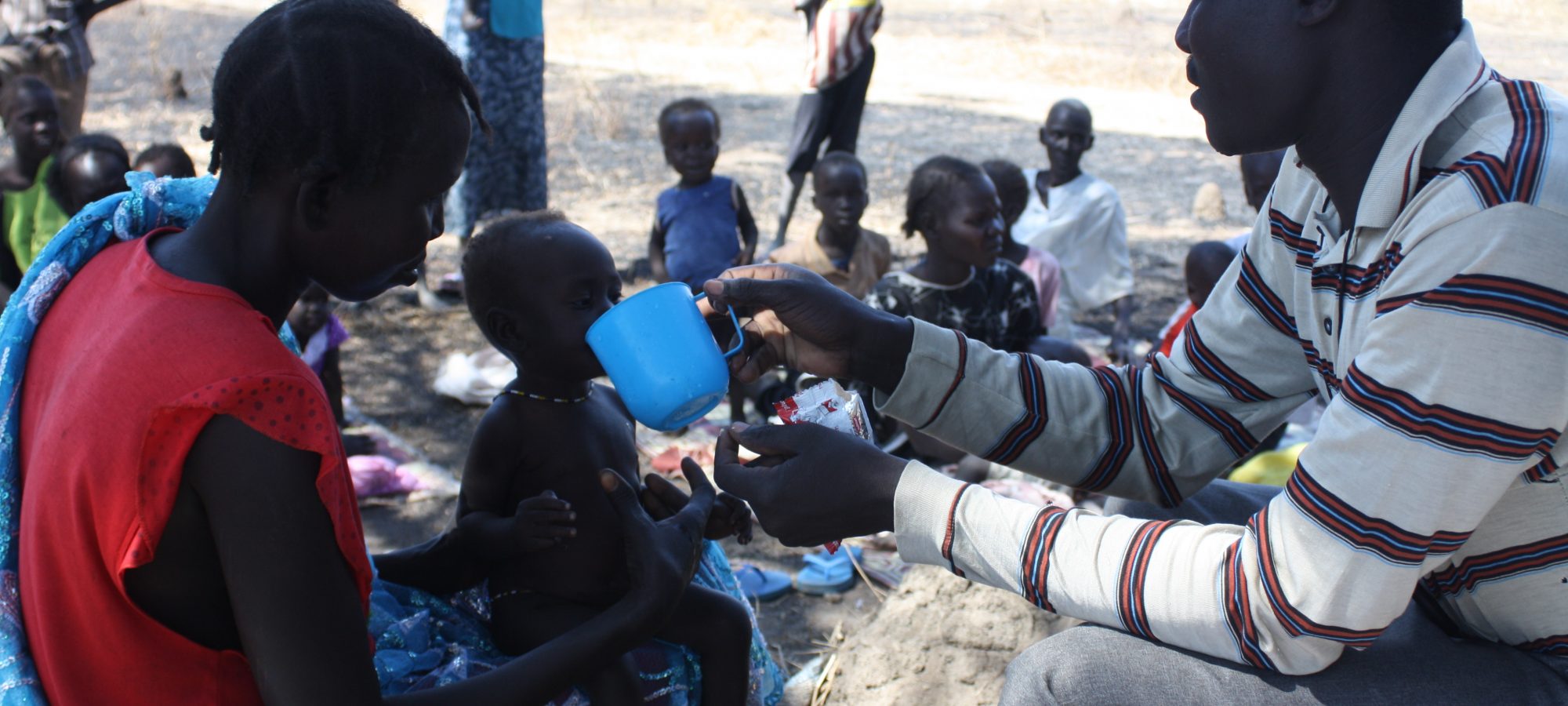South Sudan ranks 15th highest in the world in mortality rates for children under five. Malaria and malnutrition are amongst the leading health threats in the country. As a result, Malaria Consortium has been working to provide an integrated response to malnutrition and common childhood diseases in the country. This is the story of Paul Malong, a community health worker, trained by Malaria Consortium and partners, in Gueng Village, South Sudan.
Pual Malong is a community nutrition worker in Gueng Village in Mariem East Payam, Aweil West County. He has been a community nutrition worker since 2011 when he was first trained by Malaria Consortium. Previously he had been a supervisor for 133 community drug distributors.
“When the nutrition programme was introduced to treat severe malnutrition cases, the community again selected me to be the community nutrition worker. I was then trained again by Malaria Consortium, after I had received the initial ICCM programme training. So far I have received two ICCM and three nutrition trainings and I have got all the skills for carrying out ICCM and as a community nutrition worker.”
Malong’s training has meant he is able to not only help his community with ICCM care, but he is also able to help tackle malnutrition, which is a common problem for children in the area, increasing the risk of disease and mortality. Malong screens children brought to his outpatient therapeutic feeding (OTP) site, where he provides general health education. He screens the children for severe acute malnutrition and provides nutritional supplements (Plumpy’nut) to those who need it and refers more complex cases to the nearest health facility or Aweil Hospital. He has enrolled 32 children in the malnutrition and ICCM programme at his OTP site. Malong’s work has been well received by his community, especially by community leaders and caregivers, who are now able to access malaria and malnutrition treatment, recognise common disease symptoms and seek appropriate healthcare for their children.
“The caregivers like the programme and they use the service, especially now they are able to recognise some danger signs in their children and immediately go to health facility or to the OTPs. The treatment they receive at the OTP site and the daily Plumpy’nut supply for malnourished children helps so much.”
Malong was concerned, however about delays in the supply of Plumpy’nut and some of the drugs used for ICCM. He also commented that the lack of storage facilities for the supplies needed to be improved as they are currently stores at his house. A simple shelter for OTP days in the rainy season would also be good, he added hopefully. His usual location is under a tree.
But despite these concerns, he is generally very pleased with how his work is going. “The nutrition and ICCM programmes work well based on my experience as an ICCM supervisor and community nutrition worker. We refer most of the cases that might be beyond the capacity of the ICCM and nutrition programmes, based on the danger signs.”
“The programme is liked by all in the community and the leaders appreciate it and encourage the programme’s continuity in the community to serve their children.”
You can read more about the programme in South Sudan by viewing or downloading the full learning paper here.
